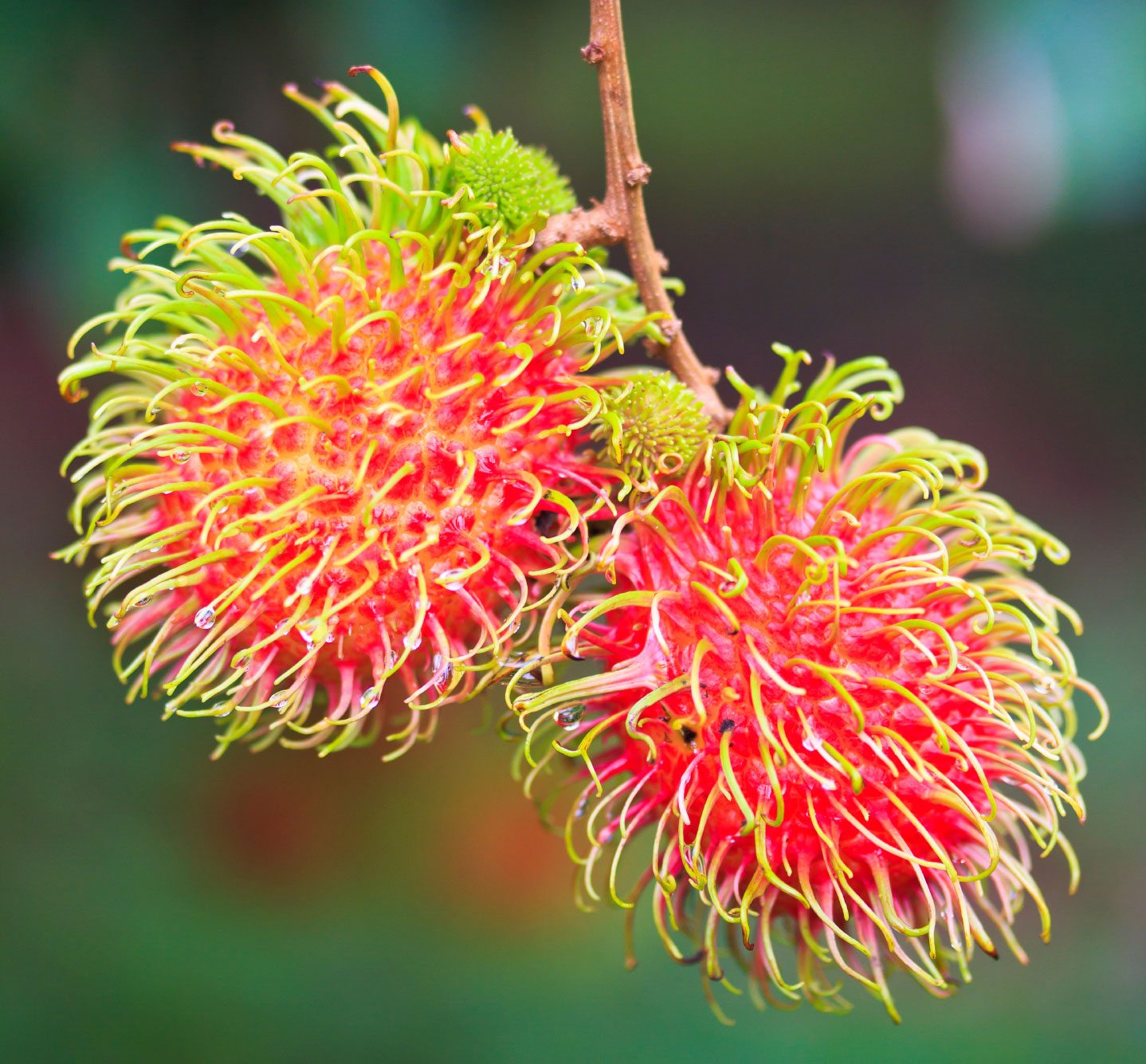
I'm lucky to live in the quintessential melting pot of America and, as such, have easy access to many foods that might otherwise be deemed exotic elsewhere. Among these are a dizzying array of fruits and vegetables from around the world, including the rambutan. If you've never heard of these you may be wondering what on earth are rambutans, and where can you grow rambutans? Keep reading to find out.
What are Rambutans?
A rambutan (Nephelium lappaceum) is a type of fruit which looks much akin to the lychee with a sweet/sour flavor. It is high in iron, vitamin C, copper, and antioxidants and, while it may be rarely found in your neck of the woods, it is highly prized in Malaysia, Thailand, Burma, and Sri Lanka into India as well as eastward through Vietnam, the Phillippines, and Indonesia. The name rambutan is derived from the Malay word rambut, which means “hairy” -- an apt description for this fruit. Rambutan fruit trees bear fruit that is indeed hairy in appearance. The fruit, or berry, is oval-shaped with a single seed. The outer peel is reddish or sometimes orange or yellow and covered with malleable, fleshy spines. The interior flesh is white to pale pink with a flavor similar to grapes. The seed can be cooked and eaten or the entire fruit, seed, and all consumed. Rambutan fruit trees are male, female, or hermaphrodite. They are evergreens that attain a height of between 50 and 80 feet (15-24 m.) in height with a dense, spreading crown. Foliage is alternate, 2 to 12 inches (5-31 cm.) long with hairy red rachis when young, and one to four pairs of leaflets. These elliptic to oblong leaves are slightly leathery, yellow/green to dark green, and dull on the surface with yellow or bluish green veins underneath.
Where Can You Grow Rambutans?
Assuming you don't live in any of the countries listed above, you can grow rambutan trees in tropical to semi-tropical environs. They thrive in temps from 71 to 86 degrees F. (21-30 C.), and even a few days of temps below 50 degrees F. (10 C.) will kill these heat lovers. So, rambutan trees are best grown in warm regions such as Florida or areas of California. Of course, if you have a greenhouse or sunroom, you can give rambutan tree care a whirl by growing them in containers.
Rambutan Growing Tips
Even if you live in the appropriate USDA zone for growing the rambutan tree, keep in mind that Mother Nature is fickle and you need to be prepared to protect the tree from a sudden dip in temperature. Also, rambutan trees like to stay moist. In fact, temperature and the proper humidity are the keys to growing a thriving rambutan. Rambutan trees can be grown from seed or seedling, both of which will no doubt need to be obtained from an online source unless you have access to fresh fruit in your area, in which case you can try harvesting the seed yourself. Seed must be very fresh, less than a week old, to be viable and all the pulp should be cleaned from it. To grow rambutan from seed, plant the seed flat in a small pot with drainage holes and filled with organic soil amended with sand and organic compost. Place the seed in the dirt and lightly cover with soil. It takes between 10 and 21 days for the seed to germinate. It will take about two years for the tree to be big enough to transplant outdoors; the tree will be about a foot (31 cm.) tall and still fragile, so it is better to repot it than actually put it in the ground. The transplanted tree should be placed in a ceramic, not plastic, pot in soil that is one part each of sand, vermiculite, and peat to create good drainage.
Rambutan Tree Care
Further rambutan tree care will include feeding your tree. Fertilize with a food that is 55g potash, 115g phosphate, and 60g urea at six months and again at one year of age. At two years old, fertilize with a food that is 165g potash, 345g phosphate, and 180g urea. At the third year, apply 275g potash, 575g phosphate, and 300g urea every six months. Keep the tree damp and humidity at 75 to 80 percent in a temperature at around 80 degrees F. (26 C.) in partial sun for 13 hours a day. If you live in an area with this climate and want to move the tree into the garden, leave 32 feet (10 m.) between trees and the soil needs to be 2 to 3 yards (2-3 m.) deep. The rambutan tree takes a bit of TLC to get a healthy plant going, but is well worth the effort. In four to five years you'll be rewarded with the unique, tasty fruit.
Sign up for the Gardening Know How newsletter today and receive a free copy of our e-book "How to Grow Delicious Tomatoes".

Amy Grant has been gardening for 30 years and writing for 15. A professional chef and caterer, Amy's area of expertise is culinary gardening.
